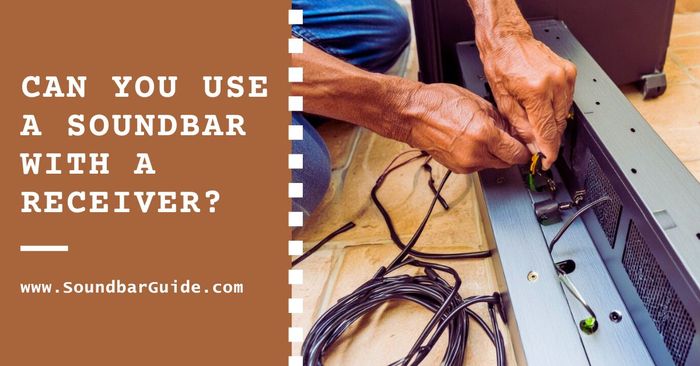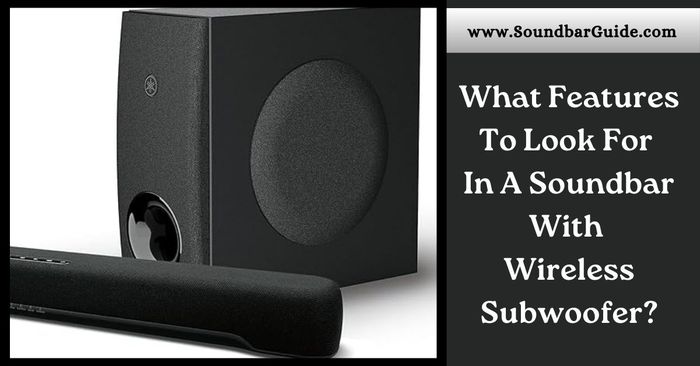Soundbars have advanced to become feature-rich and offer superior sound quality, which can complement a home theater system nicely.
Many audiophiles and home cinema enthusiasts look for ways to streamline their audio setup without sacrificing quality.
Combining a soundbar with a receiver may seem unconventional, but it’s a viable option for enhanced audio experiences.
So, can you use a soundbar with a receiver?
Yes, you can use a soundbar with a receiver if the receiver has pre-outs for each channel. Ensure that your soundbar can either function as a standalone unit or be integrated as part of your existing audio setup.
Utilizing a soundbar with a receiver can often provide a neat solution, especially in setups where space or simplicity is a priority. Careful consideration of the connectivity options and soundbar capabilities will ensure your audio system works harmoniously.
In this post, I will talk about whether you can use a soundbar with a receiver. If you want to get a clear idea about this topic, put your full attention while studying the following discussion.
So, let’s get started…
Table of Contents
The Soundbar And Receiver Combo
Imagine the perfect audio experience in your home. Combining a soundbar with a receiver might just be the key.
Integrating a modern soundbar with a receiver enhances both the power and quality of your home entertainment system’s audio.
Let’s explore the intricacies of this combo and what it brings to the table…
Key Features Of A Modern Soundbar
- Streamlined Design: Soundbars offer a sleek and unobtrusive presence in any room.
- Advanced Audio Technology: With features like Dolby Atmos, enjoy immersive sound that heightens your viewing experience.
- Bluetooth Connectivity: Wirelessly stream music or connect to other devices with ease.
- Built-in Voice Assistants: Control your soundbar using simple voice commands.
- Multiple Input Options: Connect via HDMI, optical, or AUX inputs for versatile usability.
These features combined make soundbars a powerful standalone audio solution for homes.
Understanding The Role Of A Receiver
The receiver serves as the heart of your home audio system. It amplifies audio signals and sends them to the speakers, ensuring you get the best sound possible.
Here are its roles:
| Role | Description |
|---|---|
| Amplification | Improves sound strength. |
| Processing | Decodes audio formats for clarity. |
| Connecting | Links various audio/video sources. |
| Managing | Allows easy control over inputs and outputs. |
When you combine a soundbar’s simplicity with a receiver’s power, you create an enviable audio setup for any home theater.
Benefits Of Using Soundbar & Receiver Combo
Combining a soundbar with a receiver catapults your home entertainment to new heights. This dynamic duo works together to deliver a power-packed audio-visual experience.
Now, explore the perks of integrating these two audio powerhouses…
Enhanced Audio Experience
Soundbars are known for their sleek design and crisp sound quality. But when paired with a receiver, they unlock a new dimension of auditory bliss.
A receiver works behind the scenes, processing and amplifying audio signals before they reach your ears. This means you get to enjoy deeper bass, clearer dialogue, and a more immersive surround sound.
Whether you’re watching a thrilling movie or listening to your favorite tunes, this combination ensures you feel every beat and hear every note with enhanced clarity.
Expanded Input And Output Options
Soundbars come with certain connectivity limits. Add a receiver, and suddenly, you have a hub of possibilities.
Receivers boast multiple inputs and outputs, allowing you to connect a variety of devices. This includes gaming consoles, Blu-ray players, and even turntables.
With more ports at your disposal, the entertainment setup becomes incredibly versatile and user-friendly. You can easily switch between input sources without compromising on sound quality, providing a seamless audio experience for any occasion.
Read More: Can You Add Wired Speakers To A Soundbar?
Can You Use A Soundbar With A Receiver – Connection Process
Many wonder about pairing a soundbar with a receiver to enhance their audio experience. This section will break down the connection process to ensure seamless setup.
Connecting A Soundbar With A Receiver
Follow these clear steps to connect a soundbar to a receiver:
- Check Compatibility: Ensure both devices support the same connection type.
- Gather Cables: Obtain optical, HDMI, or analog cables based on the available ports.
- Power Off Devices: Turn off both the soundbar and receiver to prevent damage.
- Connect Cables: Plug one end of the cable into the soundbar and the other into the receiver’s output.
- Power On Devices: Switch on both devices and select the appropriate input channel on the receiver.
- Adjust Settings: Navigate the soundbar/receiver settings to enable the external speakers if necessary.
- Test Sound: Play audio to confirm the connection is successful and the soundbar is producing sound.
Also Read: Can You Add Speakers To Samsung Soundbar?
Optimal Configuration Tips
Integrating a soundbar with a receiver unlocks superior sound experiences. Yet, the setup may intimidate. This section simplifies configuration. Get clarity on tweaking receiver settings.
Try to learn these steps for pristine audio output…
Adjusting Receiver Settings For A Soundbar
Seamless integration starts with the right settings. Receivers come laden with options. Not all suit soundbars.
Some tweaks ensure harmony:
- Turn off internal speakers in the TV menu to prevent audio overlap.
- Switch the soundbar to AUX or Line In mode if connected analog.
- For digital connections, choose the appropriate input – optical, HDMI, or otherwise.
- Modify the receiver’s audio output to Stereo or Direct mode to match the soundbar’s capability.
- Disable additional surround sound processing. It avoids conflicting audio signals.
Getting The Best Sound Quality
Optimal sound requires attention to placement and tuning:
| Aspect | Tip |
|---|---|
| Placement | Position the soundbar under the TV. Ensure there’s no obstruction for sound. |
| Room acoustics | Sound reflects. Place soft furnishings strategically to reduce echo. |
| Calibration | Use calibration tools. Many receivers offer this to fine-tune audio. |
| Volume Levels | Balance the soundbar with subwoofers or speakers for even sound. |
Compatibility Issues
Integrating a soundbar with a receiver can be tricky. Not all soundbars are designed to work with external receivers. Some are built as standalone units for simplicity. It’s crucial to ensure your devices can communicate effectively.
Let’s explore why there might be compatibility issues and how you can resolve them…
Why All Soundbars May Not Work With Receivers?
A soundbar and receiver may conflict due to different audio processing capabilities.
Here are common reasons:
- Self-amplification: Most soundbars have built-in amps, potentially clashing with a receiver’s amp.
- Digital audio inputs: A receiver might lack the specific inputs that a soundbar requires.
- Audio format mismatch: Receivers and soundbars could support different audio formats.
Ensuring Connection Compatibility
To ensure your soundbar and receiver work together, follow these steps:
- Check the soundbar’s input options. Look for HDMI (ARC), optical, or AUX inputs.
- Review the receiver’s output ports. Match them with the soundbar’s inputs.
- Consider the audio formats both devices support. They should align to function properly.
- If needed, use a digital to analog converter (DAC) to bridge the connection.
Note: Refer to the soundbar manufacturer’s guidelines on connected devices. Some soundbars are not compatible with certain receivers.
FAQs On Using A Soundbar With A Receiver
Is A Soundbar Really Worth It?
A soundbar is worth it if you’re looking to enhance your TV’s audio quality without the complexity and space requirements of a full surround sound system. It offers a significant upgrade over built-in TV speakers, providing clearer dialogue and more immersive sound for movies, music, and games.
Can A Soundbar Be Used With A Surround Sound System?
Yes, a soundbar can complement a surround sound system by serving as the front channel or standalone audio output.
Can A Soundbar Replace A Home Theater System?
A soundbar can replace a home theater system for a more compact setup, delivering decent audio quality but usually lacks the full surround sound effect.
Do You Need An Amplifier For A Soundbar?
Most soundbars have built-in amplifiers and don’t require an external one. Only passive soundbars, which are less common, need a separate amplifier to function.
Can You Add Speakers To Soundbar?
Yes, you can add speakers to a soundbar, but it depends on the specific model and its connectivity options. Some soundbars support wireless or wired connections for additional speakers, while others may not have this capability.
Conclusion
After studying the above discussion, you have got to understand that pairing a soundbar with your receiver can enhance your audio experience.
However, you need to check compatibility before setup to ensure a smooth integration. If everything is done properly, it creates the possibility for richer sound and dynamic home theater systems.
So, optimize your entertainment space now and enjoy the auditory bliss!


![How To Connect Vizio Soundbar To Vizio TV: [Step By Step Guide]](https://soundbarguide.com/wp-content/uploads/2024/10/how-to-connect-vizio-soundbar-to-vizio-tv.jpg)


Leave a Reply